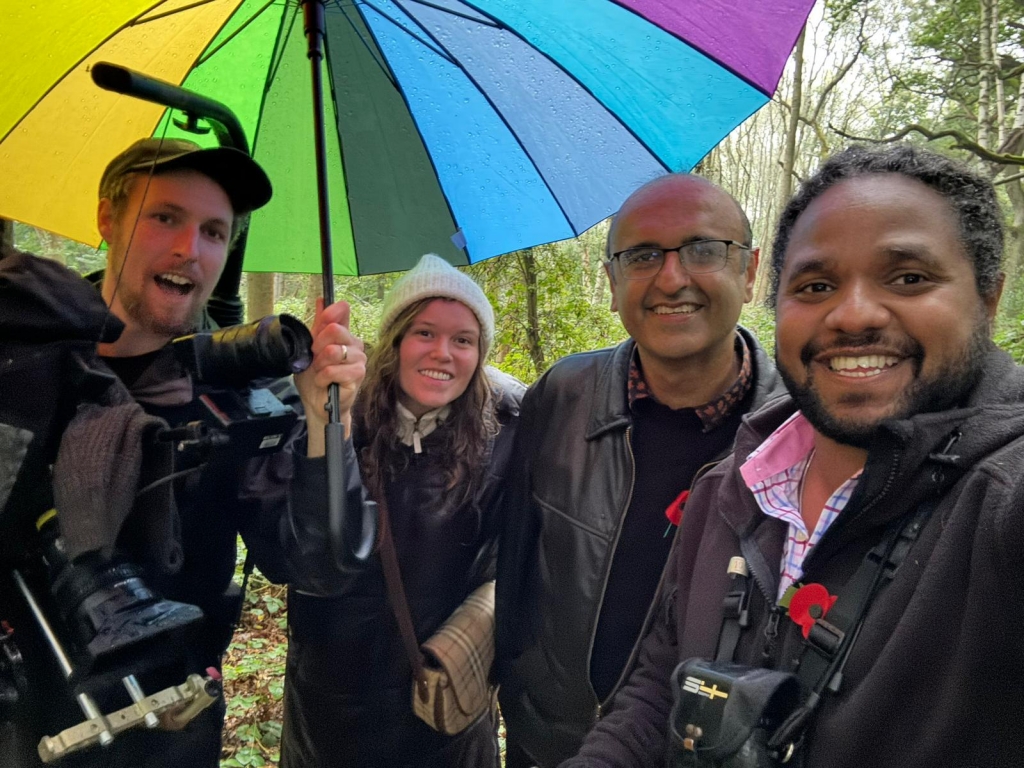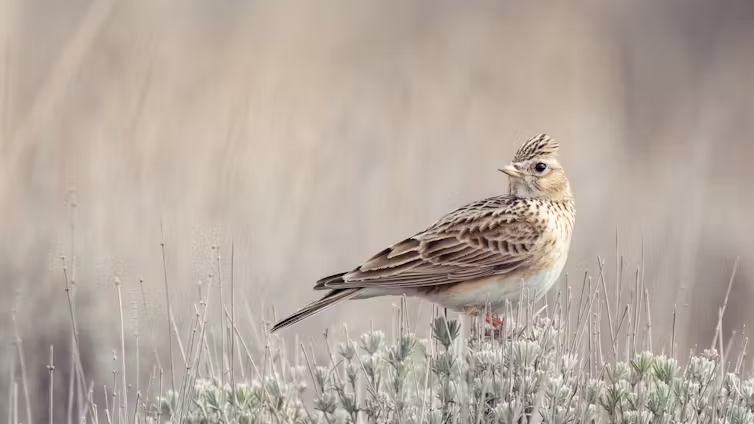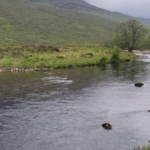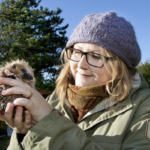BBC Countryfile investigates the ash dieback at Wytham Woods

The threat of ash dieback on our ecosystems was the focus on BBC Countryfile
Professor Yadvinder Malhi, Ecosystems Research Programme Leader at the Environmental Change Institute (ECI) and Tom Atkins, Researcher at the ECI’s Leverhulme Centre for Nature Recovery, shared what they’ve learned during a four-year study at the University-owned Wytham Woods.
BBC presenters Hamza Yassin and Ellie Harrison went up the Flux Tower, a scaffolding structure which allows researchers to measure the flows of carbon dioxide and water across the woodland, the “breath of the woodland”.
Experts believe ash dieback will kill up to 80% of ash trees across the UK. At a cost of billions, the effects will be staggering. It will change the landscape forever and threaten many species which rely on ash.
Prof Malhi said: “Ash dieback is a silent pandemic affecting nature in Western Europe. Wytham is an ideal place to study ash dieback both in how it’s affecting the ash trees and also the wider ecosystem. And that’s because the Woods have such a long history of studies of the mammals, the birds, the other trees and the soil.
“What we’re doing at Wytham is to try to bring together all those range of studies to understand that when you take out the ash trees, how does that cascade through an entire ecosystem.
“One of the fascinating things about a change in an ecosystem is that there are winners and losers. And there are also different processes determining what you win and lose. And I believe that with the ecosystem at Wytham Woods and the richness of the ecology and the interactions will be here for decades to come.”
Ash dieback (Hymenoscyphus fraxineus) is a fungus which originated in Asia. It doesn’t cause much damage on its native hosts of the Manchurian ash (Fraxinus mandshurica) and the Chinese ash (Fraxinus chinensis) in its native range. However, its introduction to Europe about 30 years ago has devastated the European ash (Fraxinus excelsior) because our native ash species did not evolve with the fungus and this means it has no natural defence against it.
Wytham Woods is such a big carbon sink because it is still recovering from intense land management prior to and during the Second World War before, and is now benefiting from a focus on conservation since the 1960s.
Ash dieback may well turn the Woods from a carbon sink into a carbon source in the next few years. This will be closely tracked by researchers working on the new Ash dieback project funded by the Natural Environment Research Council.
Wytham Woods has been owned and maintained by the University of Oxford since 1942. The Woods are often quoted as being one of the most researched pieces of woodland in the world, and their 1000 acres are designated as a Site of Special Scientific Interest. The site is exceptionally rich in flora and fauna, with over 500 species of plants, a wealth of woodland habitats, and 800 species of butterflies and moths. The exceptional detail of research there reveals nationally rare animals.
One rare creature that thrives there is the Rugged Oil Beetle (Meloe rugosus) which Tom Atkins, Researcher, surveys for: “The Rugged Oil Beetle is one of our strangest beetles, yet very few people have heard of it. Perhaps that’s because it only comes out at night during the winter months – I don’t blame people for not wanting to go out looking for it!
“It’s one of the UK’s five species of oil beetle, named because they secrete an incredible oily substance from their joints which deters predators. All have suffered large declines over the past century, mainly due to the loss of high-quality species-rich grassland habitats.
“Its fortunes are inextricably linked to populations of solitary bees, which require these grassland habitats, as its bizarre lifecycle depends on the pollen the bees collect.”
Indeed, the Rugged Oil Beetle larvae must steal the food store that the bee has provisioned for its own larvae in order to survive. But for a young oil beetle to reach this stage, it has to undertake a miraculous feat.
After hatching in spring, thousands of oil beetle larvae climb nearby flowers and wait in the flowerhead for visiting bees. They must attach themselves to the legs or body of the correct solitary bee host, so that they can be brought back to the bee’s brood chamber to feed on the pollen store.
The odds of achieving this are less than 1%, so the female must produce 20,000-30,000 eggs during her lifetime, resulting in an incredible distended appearance. Most larvae attach to the wrong host or end up starving.
Tom added: “Because Rugged Oil Beetles are so specialised in their requirements, it suggests that the grassland at Wytham Woods is being managed well and could be an important refuge for this rare species.
“It’s yet another notable species that the Woods are home to.”
Find out more about the research taking place at Wytham Woods
Watch this episode of Countryfile on iPlayer
Other recent stories





